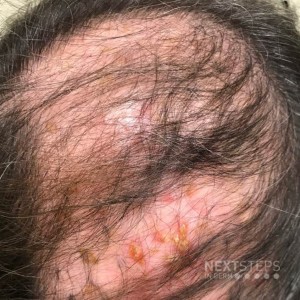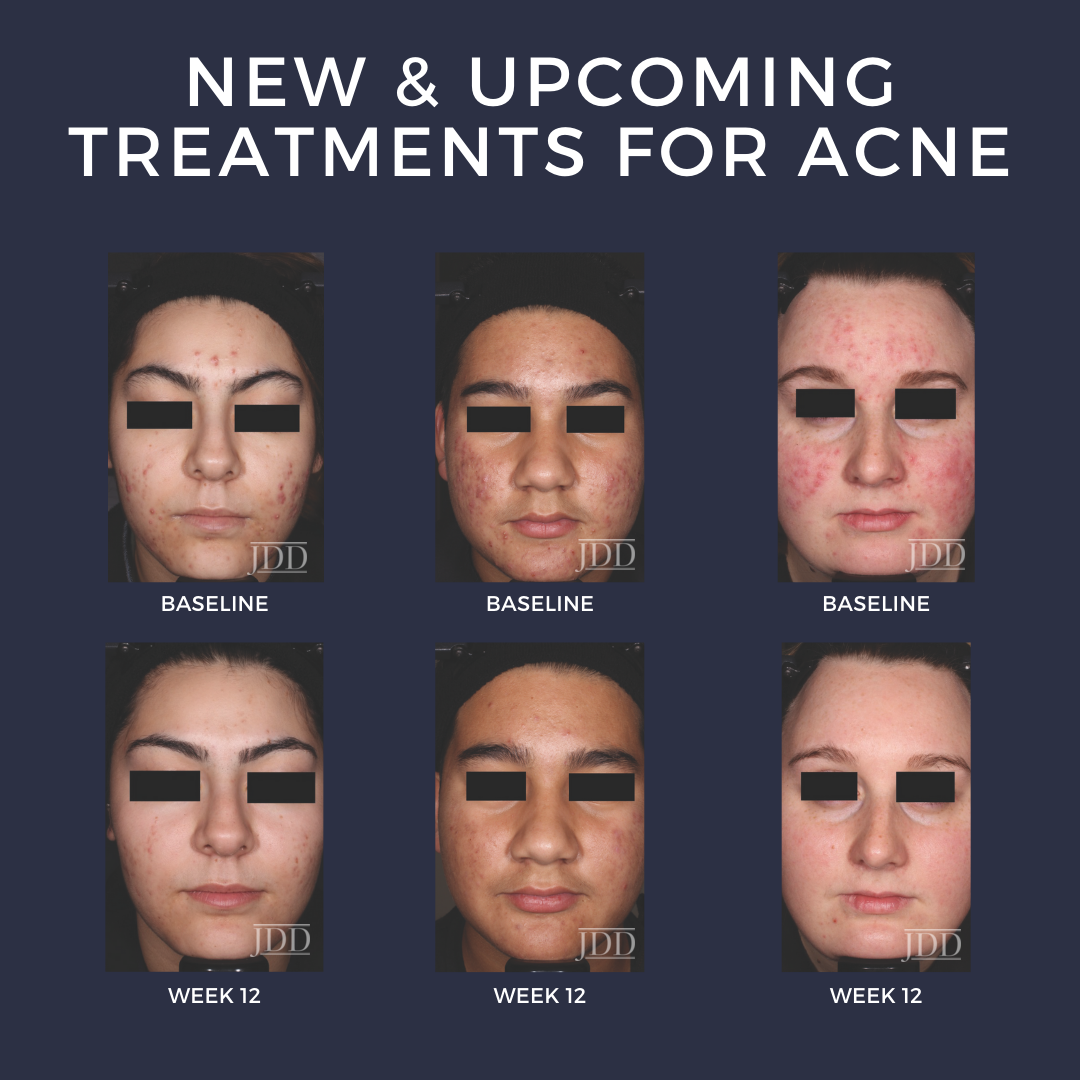Hair Disorders – Friday Pop Quiz 4/10
 Biopsy reveals absence of follicles, a mixed inflammatory infiltrate, and dermal fibrosis. Which of the following is the most likely diagnosis?
A. Dissecting cellulitis
B. Erosive pustular dermatosis
C. Cicatricial pemphigoid
D. Pustular psoriasis
E. Folliculitis decalvans
To find out the correct answer and read the explanation, click here.
Brought to you by our brand partner …
Biopsy reveals absence of follicles, a mixed inflammatory infiltrate, and dermal fibrosis. Which of the following is the most likely diagnosis?
A. Dissecting cellulitis
B. Erosive pustular dermatosis
C. Cicatricial pemphigoid
D. Pustular psoriasis
E. Folliculitis decalvans
To find out the correct answer and read the explanation, click here.
Brought to you by our brand partner …
 Biopsy reveals absence of follicles, a mixed inflammatory infiltrate, and dermal fibrosis. Which of the following is the most likely diagnosis?
A. Dissecting cellulitis
B. Erosive pustular dermatosis
C. Cicatricial pemphigoid
D. Pustular psoriasis
E. Folliculitis decalvans
To find out the correct answer and read the explanation, click here.
Brought to you by our brand partner …
Biopsy reveals absence of follicles, a mixed inflammatory infiltrate, and dermal fibrosis. Which of the following is the most likely diagnosis?
A. Dissecting cellulitis
B. Erosive pustular dermatosis
C. Cicatricial pemphigoid
D. Pustular psoriasis
E. Folliculitis decalvans
To find out the correct answer and read the explanation, click here.
Brought to you by our brand partner … 

 So many diseases, so few FDA approved indications. Between the mind-numbing time and cost from bench to bottle, it is no surprise that dermatologists, as masters of the integument are the off-label bandits, marrying their wealth of knowledge on the pathophysiology of skin diseases to the mechanisms by which medications work to create an evidenced-based armament of therapies for both common and rar …
So many diseases, so few FDA approved indications. Between the mind-numbing time and cost from bench to bottle, it is no surprise that dermatologists, as masters of the integument are the off-label bandits, marrying their wealth of knowledge on the pathophysiology of skin diseases to the mechanisms by which medications work to create an evidenced-based armament of therapies for both common and rar …  At the 17th Annual ODAC Dermatology, Aesthetic & Surgical Conference held in Orlando, Florida, Dr. Linda Stein Gold, Director of Dermatology Clinical Research and Division Head of Dermatology for the Henry Ford Health System, lectured on new and future treatments for acne. She opened her lecture by describing the traditional view of lesion progression in acne vulgaris, where the microcomedone …
At the 17th Annual ODAC Dermatology, Aesthetic & Surgical Conference held in Orlando, Florida, Dr. Linda Stein Gold, Director of Dermatology Clinical Research and Division Head of Dermatology for the Henry Ford Health System, lectured on new and future treatments for acne. She opened her lecture by describing the traditional view of lesion progression in acne vulgaris, where the microcomedone …  What nerve innervates this structure?
A. Infratrochlear
B. Anterior ethmoidal
C. Infraorbital
D. Zygomaticotemporal
E. Buccal
To find out the correct answer and read the explanation, click here.
Brought to you by our brand partner Derm In-Review. A product of SanovaWorks.
…
What nerve innervates this structure?
A. Infratrochlear
B. Anterior ethmoidal
C. Infraorbital
D. Zygomaticotemporal
E. Buccal
To find out the correct answer and read the explanation, click here.
Brought to you by our brand partner Derm In-Review. A product of SanovaWorks.
…  Hormonal acne is a prevalent and frustrating condition among many women. For those who are unable to control the disease with topical medications alone, spironolactone is often a useful systemic agent. However, its off-label use and potential risk of hyperkalemia have raised the question about serum potassium monitoring. We continue our Therapeutic Cheat Sheet series, with a closer look at spirono …
Hormonal acne is a prevalent and frustrating condition among many women. For those who are unable to control the disease with topical medications alone, spironolactone is often a useful systemic agent. However, its off-label use and potential risk of hyperkalemia have raised the question about serum potassium monitoring. We continue our Therapeutic Cheat Sheet series, with a closer look at spirono …